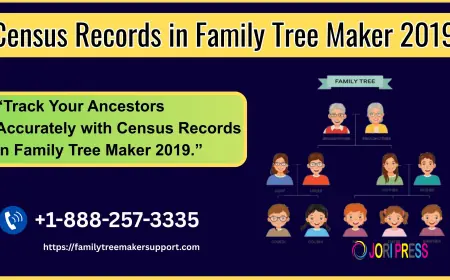Baseball Market: Key Drivers & Trends
The global Baseball market is driven by factors such as the sport's growing international popularity, increased youth participation, lucrative media rights deals, and expanding merchandising opportunities.

The global baseball market has evolved into a thriving segment of the sports industry, driven by the sport’s enduring appeal, growing youth participation, and expanding international reach. Valued at USD 15.76 billion in 2024, the market is projected to reach USD 25.76 billion by 2030, growing at a compound annual growth rate (CAGR) of 3.98% during the forecast period. While baseball has long been a cultural cornerstone in countries such as the United States, Japan, and parts of Latin America, its influence is now spreading more widely, with Europe, parts of Asia, and other emerging markets showing strong growth potential.
The sport’s popularity is fueled not only by its rich history and tradition but also by the increasing investment in infrastructure, technology, and grassroots development. Governments, sports federations, and private organizations are working together to promote baseball as both a competitive sport and a recreational activity. The rise in organized youth leagues, school competitions, and community baseball programs has created a steady pipeline of new players, fans, and consumers. This growing demographic has contributed significantly to the demand for baseball equipment, apparel, accessories, and related services.
In the modern sporting landscape, baseball is also benefitting from a stronger connection with entertainment, media, and lifestyle branding. The sport is no longer confined to stadiums; it has become part of popular culture, with brands leveraging merchandise, collaborations, and digital engagement to maintain fan loyalty. As technology continues to shape both performance and fan experiences, the baseball market is poised for steady and sustainable growth.
Emerging Trends in the Baseball Market
- Youth Development and Grassroots Programs
One of the most influential trends driving the baseball market is the emphasis on youth development. Countries are actively investing in school programs, community leagues, and regional tournaments to introduce baseball to younger generations. This has not only nurtured local talent but has also built long-term fan bases. For example, structured training academies in Asia and Latin America are producing players who go on to compete in international leagues, further popularizing the sport in their home countries. - Technological Integration in Equipment
Advancements in material science and engineering have significantly improved the design and performance of baseball gear. Lightweight yet durable bats, protective helmets with better impact resistance, moisture-wicking apparel, and smart accessories are becoming more common. Some products even integrate sensors to track swing speed, ball impact, and player movement, providing valuable data for performance analysis. - Globalization of Professional Leagues
While Major League Baseball (MLB) remains a dominant force, professional baseball leagues in Asia, Europe, and Latin America are gaining international recognition. These leagues not only attract local fans but also draw interest from global audiences through streaming platforms, partnerships, and international tournaments. This has widened the market for merchandise, sponsorships, and broadcast rights. - Sustainability and Eco-Friendly Manufacturing
There is growing attention on the environmental impact of sports manufacturing. Brands are increasingly using recycled or sustainable materials in bats, gloves, and uniforms. Eco-conscious production processes and biodegradable packaging are also emerging as selling points, appealing to both organizations and consumers who value sustainability. - Lifestyle Branding and Fashion Integration
Baseball apparel and caps have transcended the sport to become global fashion items. Collaborations between baseball brands and streetwear or luxury fashion labels have created a cross-industry appeal, attracting non-traditional consumers who see baseball merchandise as a style statement. - Women’s Participation in Baseball
Women’s leagues, tournaments, and grassroots initiatives are expanding the sport’s audience and participation base. Increased representation in media and professional opportunities for women players are creating new market segments for equipment and apparel tailored specifically for female athletes.
Download Free Sample Report - https://www.techsciresearch.com/sample-report.aspx?cid=28492
Key Market Drivers
- Rising Youth Participation
Increasing numbers of children and teenagers are joining organized baseball programs through schools, community clubs, and private academies. This trend is especially strong in North America, Japan, South Korea, and parts of Europe, where structured youth leagues are well-supported. - Urbanization and Sports Infrastructure Development
Expanding urban areas often integrate sports facilities into community planning. New stadiums, training centers, and recreational baseball fields not only make the sport more accessible but also generate economic benefits through tourism, employment, and local business growth. - International Tournaments and Cross-Border Collaborations
Events such as the World Baseball Classic and various international club competitions are increasing exposure to the sport in new markets. Cross-border player exchanges and collaborations between leagues are also boosting global interest. - Technological Advancements in Training and Broadcasting
Training technologies, including virtual reality simulations and AI-driven performance analytics, are enhancing player development. Meanwhile, improvements in live streaming and broadcasting are making the sport more accessible to global audiences, even in regions without established baseball traditions. - Merchandising and Customization
The demand for customized jerseys, personalized bats, and team-branded accessories is driving sales. Consumers enjoy the ability to tailor products to their preferences, whether for personal use or as memorabilia.
Industry Key Highlights
- The accessories segment is the fastest-growing product category, driven by innovations in performance and safety features.
- Europe is emerging as the fastest-growing regional market, with strong growth in countries like Germany, the UK, and France.
- Youth-focused development programs are creating long-term growth opportunities for equipment and apparel manufacturers.
- Lifestyle and fashion crossovers are attracting a non-traditional consumer base.
- Technological innovations in both products and fan engagement platforms are transforming the industry.
Competitive Analysis
The baseball market is competitive, with a mix of specialized baseball companies and global sportswear giants. Established players such as Nike Inc, Adidas AG, and Puma SE leverage their extensive distribution networks and brand recognition to dominate the apparel and footwear segments. Specialty brands like Baseballism, Rake Baseball Company, and RotoWear focus on niche designs and baseball culture-inspired merchandise, appealing to core fans.
Routine and Ebbets Field offer a blend of retro aesthetics and modern styles, while Novus Clothing Company and Scheels bring regional strength and community engagement to their strategies. Many of these brands are adopting digital-first approaches, engaging with fans through social media, influencer partnerships, and direct-to-consumer platforms.
Competition also extends into innovation, with companies racing to develop the most advanced performance gear. The integration of wearable technology, eco-friendly materials, and customization options is becoming a key differentiator in the marketplace.
Future Outlook
The baseball market’s growth through 2030 is expected to be shaped by a combination of tradition and innovation. While established baseball nations will continue to anchor demand, the most dynamic growth will come from emerging markets where the sport is still developing.
Future trends likely to influence the market include:
- Expansion of mixed-gender and women’s leagues, creating new consumer segments.
- Greater adoption of AI and data analytics in both training and fan engagement.
- Continued globalization of professional leagues, leading to more diverse revenue streams.
- Development of eco-certified baseball products that meet sustainability standards.
- Growth of immersive fan experiences through virtual and augmented reality.
As more countries embrace baseball through grassroots initiatives, league development, and media exposure, the sport’s commercial opportunities will continue to multiply. This creates a favorable environment for both established and emerging brands to expand their global footprint.
10 Benefits of the Research Report
- In-depth analysis of global and regional baseball market size and growth forecasts up to 2030.
- Detailed segmentation by product type, level of play, engagement type, and region.
- Comprehensive review of emerging consumer and participation trends.
- Insight into technological advancements shaping equipment performance and safety.
- Competitive landscape mapping key players and their market strategies.
- Identification of high-growth regional markets and investment opportunities.
- Evaluation of sports infrastructure development impact on market expansion.
- Analysis of sustainability trends and eco-friendly manufacturing practices.
- Strategic recommendations for market entry, brand positioning, and product innovation.
- Risk assessment and mitigation strategies for industry stakeholders.
Regional Insights
North America remains the largest and most established market, with a deeply rooted baseball culture, strong league structures, and a robust merchandising ecosystem. The presence of iconic teams and long-standing fan traditions ensures consistent demand for baseball-related products.
Asia, led by Japan, South Korea, and Taiwan, continues to be a powerhouse in both professional competition and youth development. Baseball is a major sport in these countries, supported by advanced training facilities and strong fan engagement.
Europe, while a relatively newer market for baseball, is showing rapid growth. Increasing participation among youth, government support for sports diversification, and rising interest in outdoor activities are all contributing factors.
Latin America, particularly countries like the Dominican Republic, Cuba, and Venezuela, remains a critical talent hub for professional baseball. While economic constraints can limit consumer spending, the passion for the sport ensures steady participation and market demand.
Contact Us-
TechSci Research LLC
420 Lexington Avenue, Suite 300,
New York, United States- 10170
M: +13322586602
Website: www.techsciresearch.com
What's Your Reaction?
 Like
0
Like
0
 Dislike
0
Dislike
0
 Love
0
Love
0
 Funny
0
Funny
0
 Angry
0
Angry
0
 Sad
0
Sad
0
 Wow
0
Wow
0

















































